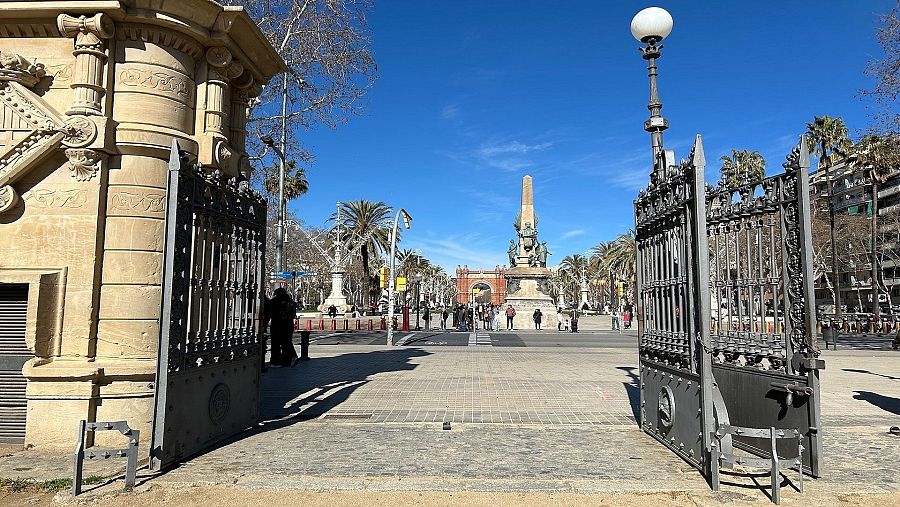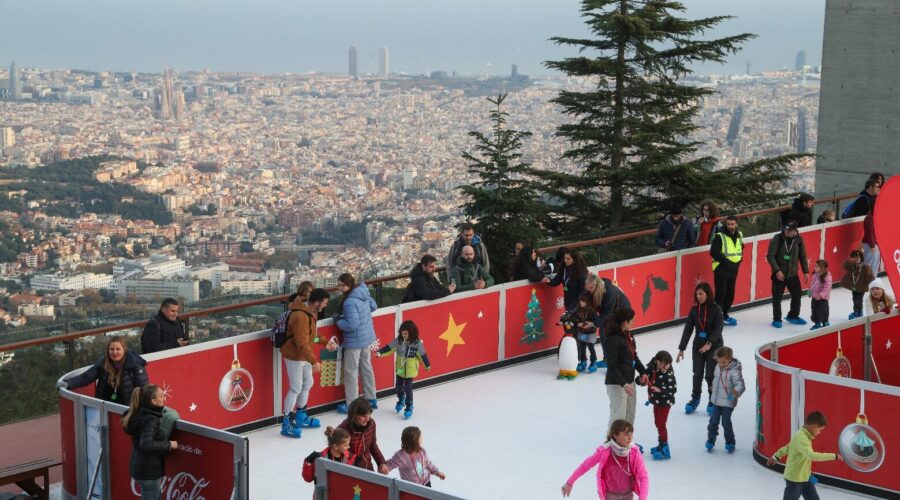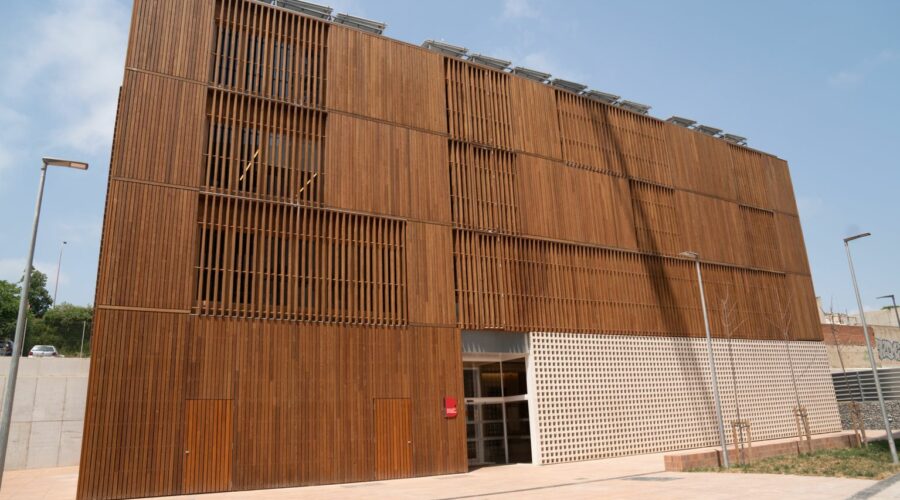
The gate of the Ciutadella Park
In 1876, when Gaudí was just 24 years old, he was commissioned to design this gate as part of a larger project led by his mentor, the master builder Josep Fontserè i Mestres. Fontserè, a native of Riudoms and protector of the young architect, had requested the collaboration of Gaudí, who worked as a draughtsman in his office. On May 30 of that year, the project was presented, although signed by Fontserè.
The fence, which surrounds the park, is one kilometer long and has 132 linking columns and seven gates. Three of them are located on Paseo de Picasso, three others on Paseo de Pujades and one on Princesa Street. The main doors are notable for their nine-meter-high columns, accompanied by four-meter-high auxiliary columns. These entrances are crowned by chandeliers that were originally lit by gas flames, although today they have been electrified. The coat of arms of Barcelona, with the war helmet of James I of Aragon and a winged dragon, adorns these columns. This symbol of the dragon, recurrent in Gaudí’s work, adds a touch of majesty and integrates harmoniously with the design of the gate.
Details
The construction of the gate was carried out by the foundry “Nueva Vulcano” and the workshops of Marià Rifà i Rumeu, with a total cost of 250,000 pesetas. The work did not go unnoticed in its time. On September 20, 1880, Eduard Támaro, editor of “La Ilustració Catalana” and Gaudí’s partner in “La Catalanista”, published an engraving of the gate along with a laudatory commentary recognizing the young architect’s paternity in the design.
As the project progressed, sculptures were added to the main gates in 1885. Venanci Vallmitjana was in charge of sculpting the statues of Industry and Commerce. His brother Agapit Vallmitjana created the statues of Agriculture and the Navy. These sculptures, along with the gate itself, were a prominent tourist attraction in Barcelona during the 19th century. They appeared in city guides and photographic collections of the time.
A special place in Barcelona
The Ciutadella Park, besides being one of the most important green lungs of the city, is a meeting place for both locals and tourists. This space is located in the heart of Barcelona. It is a quiet refuge that contrasts with the urban bustle. Gaudí’s gate is an element that many visitors overlook.
At first glance, the structure of the gate may appear simple, but closer inspection reveals the unique details that characterize Gaudí’s style. The organic shapes that decorate the structure are a reflection of his constant inspiration from nature, one of the central themes of his work. The curved lines and plant motifs blend perfectly with the natural surroundings of the park, demonstrating the architect’s mastery in the use of wrought iron. Gaudí used this material in several of his works, giving it sinuous shapes that mimic the growth of plants and other organic forms.
Although this gate does not enjoy the fame of the Sagrada Família or Casa Batlló, it represents a fundamental piece in Gaudí’s career. It is a clear example of his ability to elevate the everyday to the category of art. For those who wish to learn more about the legacy of this architectural genius, a visit to the Ciutadella Park is a must. It offers a lesser-known, but equally fascinating, sample of his talent.
Image courtesy of https://www.rtve.es, all rights reserved.



